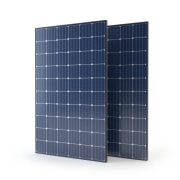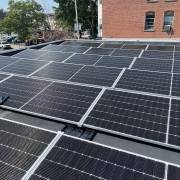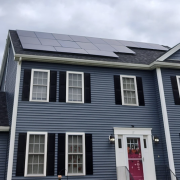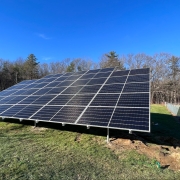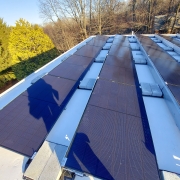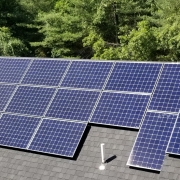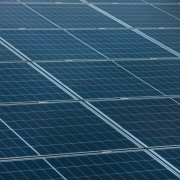Start the New Year Bright: Why 2025 is the Perfect Time to Go Solar
As we step into the New Year, there’s no better time to reflect on new beginnings and make positive changes for the future. One powerful way to do that is by making the switch to solar energy. With 2025 already here, it’s the ideal moment to embrace a more sustainable, cost-effective, and energy-efficient lifestyle.
At SGE Solar, we’re excited to help you explore the benefits of going solar in the New Year. Here’s why 2025 is the perfect time to make the move:
1. Increased Incentives & Tax Benefits
Federal and state incentives for solar energy are more generous than ever before. As governments around the world continue to focus on sustainability and carbon reduction, solar energy systems are often rewarded with significant tax credits, rebates, and financial incentives. In the U.S., the federal solar investment tax credit (ITC) currently offers up to 30% of your system cost as a tax credit, allowing you to save thousands on installation.
As we enter 2025, it’s important to act quickly before these benefits start to decrease. Many incentive programs are set to decline after 2025, so this could be the best year to install solar panels and lock in these savings.
2. Lower Energy Costs for the Long Run
Energy prices continue to rise year after year. Going solar allows you to protect yourself from the volatile cost of electricity and can dramatically reduce or even eliminate your monthly energy bills. Solar energy is a long-term investment that pays off over time—many systems pay for themselves in 3-7 years and continue to provide savings for decades after that.
By going solar in 2025, you’ll start saving immediately, locking in affordable energy costs while helping future-proof your home from energy price hikes.
3. Solar Technology is More Efficient and Affordable Than Ever
Advancements in solar technology have made panels more efficient and affordable than ever before. Today’s solar panels generate more energy with fewer panels, meaning you can install a system that meets your energy needs while maximizing space. As technology improves, solar power systems continue to offer increased reliability and performance.
Additionally, installation costs have dropped significantly over the past decade, making solar power more accessible to homeowners across the country. With better financing options available, such as solar loans, there are more ways than ever to go solar with little to no upfront cost.
4. Sustainability and Reducing Your Carbon Footprint
The growing awareness of climate change and environmental issues is pushing more people to seek sustainable solutions. Solar energy provides one of the cleanest ways to power your home or business. By choosing solar, you’re reducing your reliance on fossil fuels and decreasing your carbon footprint.
As we enter 2025, it’s clear that the environmental benefits of solar energy are more important than ever.  Every solar panel installed contributes to the global effort to reduce greenhouse gas emissions and move toward a more sustainable, clean-energy future.
Every solar panel installed contributes to the global effort to reduce greenhouse gas emissions and move toward a more sustainable, clean-energy future.
5. Increase the Value of Your Home
Homebuyers are increasingly looking for energy-efficient homes that help reduce long-term living costs. Installing solar panels is one of the most effective ways to increase your home’s market value. Studies show that homes with solar installations sell faster and at higher prices compared to similar homes without solar.
If you’re planning to sell your home in the future, going solar in 2025 is a smart move. Not only will you enjoy immediate energy savings, but you’ll also enhance the value and appeal of your property.
6. Energy Independence and Security
Solar energy provides greater control over your energy consumption and security. With solar panels, you can generate your own power, reducing your dependence on the utility grid and avoiding outages that may affect your area. For those in areas prone to power disruptions or natural disasters, solar energy paired with battery storage can provide reliable backup power when you need it most.
In the face of global energy crises and natural disasters, more homeowners are seeking to become energy-independent—and solar is a reliable, proven solution.
7. Join the Solar Movement: A Growing Community
The solar industry is booming, with millions of people around the world making the transition to clean, renewable energy. As more people adopt solar power, communities are coming together to push for renewable energy solutions and advocate for positive change. By going solar in 2025, you’re not just investing in your home or business—you’re joining a global movement toward a cleaner, greener future.
Why Choose SGE Solar?
At SGE Solar, we understand that switching to solar is a big decision. That’s why our team is here to guide you through every step of the process—from consultation and design to installation and aftercare. We pride ourselves on providing high-quality, customized solar solutions that meet your unique needs, all while ensuring you take full advantage of available incentives.
Our goal is to make your solar journey seamless, efficient, and affordable, empowering you to reduce your energy bills, lessen your environmental impact, and embrace the future of clean energy.
Ready to Make the Switch?
The new year is the perfect time to set new goals—and going solar can be one of the most rewarding and impactful resolutions you make in 2025. With all the financial, environmental, and personal benefits of solar energy, it’s an investment that pays off for years to come.
Don’t wait to make the switch—contact SGE Solar today to learn more about how you can start your solar journey this year. Our expert team is ready to answer your questions, help you explore financing options, and design a system tailored to your needs.
Let 2025 be the year you embrace solar energy and take control of your energy future. Let’s build a brighter, more sustainable tomorrow—together!
About SGE Solar
SGE Solar is a leading provider of solar energy solutions in Massachusetts, Rhode Island & parts of New Hampshire. Helping homeowners and businesses make the transition to clean, renewable energy. Our team is dedicated to delivering high-quality solar systems, expert installation, and exceptional customer service. Join us in making a positive impact on the environment and your wallet!


